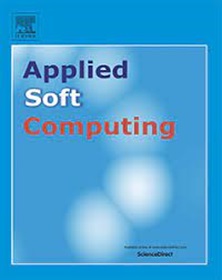Privacy preserving verifiable federated learning scheme using blockchain and homomorphic encryption
IF 7.2
1区 计算机科学
Q1 COMPUTER SCIENCE, ARTIFICIAL INTELLIGENCE
引用次数: 0
Abstract
This paper introduces a novel Privacy-Preserving Verifiable Federated Learning (PPVFL) scheme that integrates blockchain technology and homomorphic encryption to address critical challenges in decentralized machine learning. The proposed scheme ensures data privacy, integrity, verifiability, robust security, and efficiency in collaborative learning environments, particularly in sensitive domains such as healthcare. By leveraging blockchain’s decentralized, immutable ledger and homomorphic encryption’s capability to perform computations on encrypted data, the model maintains the confidentiality of sensitive information throughout the learning process. The inclusion of Byzantine fault tolerance and Elliptic Curve Digital Signature Algorithm (ECDSA) further enhances the system’s security against malicious attacks and data tampering, while the optimization of computational processes ensures efficient model training and communication. The novelty of this work lies in the seamless integration of blockchain and homomorphic encryption within a federated learning framework, specifically tailored for post-quantum cryptography, a combination that has not been extensively explored in prior research. This research represents a significant advancement in secure and efficient federated learning, offering a promising solution for industries that prioritize data privacy, security, and trust in collaborative machine learning. The effectiveness, security, and efficiency of the PPVFL scheme were validated using the Glaucoma dataset. The proposed method outperformed baseline federated learning algorithms, achieving a Dice coefficient of 0.918 and a Hausdorff distance of 4.05 on Severe Glaucoma (SG) cases, compared to 0.905 and 5.27, respectively, with traditional FedAvg. Moreover, the integration of blockchain and homomorphic encryption ensured that data privacy was upheld without compromising model performance, while efficient computation and communication processes minimized latency and resource consumption. This study contributes a robust, privacy-preserving, secure, efficient, and verifiable federated learning framework that addresses the pressing need for secure and scalable data management in distributed machine learning environments.
使用区块链和同态加密的隐私保护可验证联合学习方案
本文介绍了一种新颖的隐私保护可验证联合学习(PPVFL)方案,该方案集成了区块链技术和同态加密技术,可解决分散式机器学习中的关键挑战。所提出的方案可确保协作学习环境中的数据隐私、完整性、可验证性、稳健安全性和效率,尤其是在医疗保健等敏感领域。通过利用区块链去中心化、不可变的分类账和同态加密对加密数据进行计算的能力,该模型可在整个学习过程中保持敏感信息的机密性。拜占庭容错和椭圆曲线数字签名算法(ECDSA)的加入进一步增强了系统的安全性,可抵御恶意攻击和数据篡改,而计算流程的优化则确保了模型训练和通信的高效性。这项工作的新颖之处在于将区块链和同态加密技术无缝集成到一个联合学习框架中,专门为后量子加密技术量身定制,而这一组合在之前的研究中尚未得到广泛探索。这项研究标志着安全高效的联合学习取得了重大进展,为在协作式机器学习中优先考虑数据隐私、安全和信任的行业提供了一个前景广阔的解决方案。PPVFL 方案的有效性、安全性和效率通过青光眼数据集得到了验证。所提出的方法优于基线联合学习算法,在严重青光眼(SG)病例上实现了0.918的Dice系数和4.05的Hausdorff距离,而传统的FedAvg分别为0.905和5.27。此外,区块链和同态加密的集成确保了在不影响模型性能的情况下维护数据隐私,同时高效的计算和通信过程最大限度地减少了延迟和资源消耗。这项研究提供了一个稳健、保护隐私、安全、高效和可验证的联合学习框架,解决了分布式机器学习环境中对安全和可扩展数据管理的迫切需求。
本文章由计算机程序翻译,如有差异,请以英文原文为准。
求助全文
约1分钟内获得全文
求助全文
来源期刊

Applied Soft Computing
工程技术-计算机:跨学科应用
CiteScore
15.80
自引率
6.90%
发文量
874
审稿时长
10.9 months
期刊介绍:
Applied Soft Computing is an international journal promoting an integrated view of soft computing to solve real life problems.The focus is to publish the highest quality research in application and convergence of the areas of Fuzzy Logic, Neural Networks, Evolutionary Computing, Rough Sets and other similar techniques to address real world complexities.
Applied Soft Computing is a rolling publication: articles are published as soon as the editor-in-chief has accepted them. Therefore, the web site will continuously be updated with new articles and the publication time will be short.
 求助内容:
求助内容: 应助结果提醒方式:
应助结果提醒方式:


